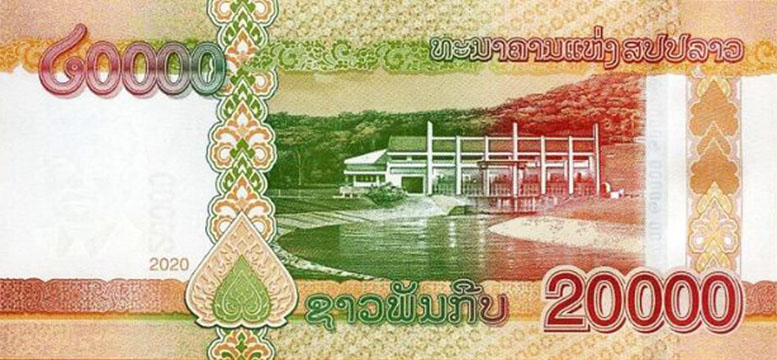
Theun-Hinboun Dam Hydropower Info by Hobo Maps - Go to Hydropower Projects Page - - - Home
Theun-Hinboun can be pronounced like "Tehn hin boon".
In 1998 Theun-Hinboun HPP went online with an initial 220 MW power plant and in 2012 added a 280 MW expansion power plant, dam & reservoir. The initial project had a small head pond and no reservoir and was called a run-of-river project but since the expansion project has added a large reservoir for seasonal storage that term is no longer applicable.
In August 2024 a MOU was signed that allows Theun-Hinboun HPP to research the concept of adding a larger regulating pond below the existing powerhouses along with a new 8 MW capacity powerhouse.
The project is located just a bit north of Ban Na Hin town and National Road 8. It is about 100 km upstream from where the Nam Kading/Nam Theun (river) joins the Mekong near Pak Kading. The project has a presence in both Bolikhamxay and Khammouane Provinces of Lao PDR
Satellite image below shows project locations.

Theun Hinboun Power Company (THPC) is the project owner with Electricite du Laos (EDL GEN) as a 60% shareholder, Norwegian Statkraft SF owning 20% and GMS Lao Company Limited with a 20% share.
The initial project cost $260 million to construct with direct shareholder investment covering about 30% of total project cost while the remaining 70% was raised from international private bank loans.
Asian Development Bank (ADB) loaned $60 million to implement this first joint-venture hydropower project between government of Laos and foreign investors (the first non-recourse financed public-private partnership project in Lao PDR).
Satellite image below shows weir & head pond as well as expansion dam and reservoir:
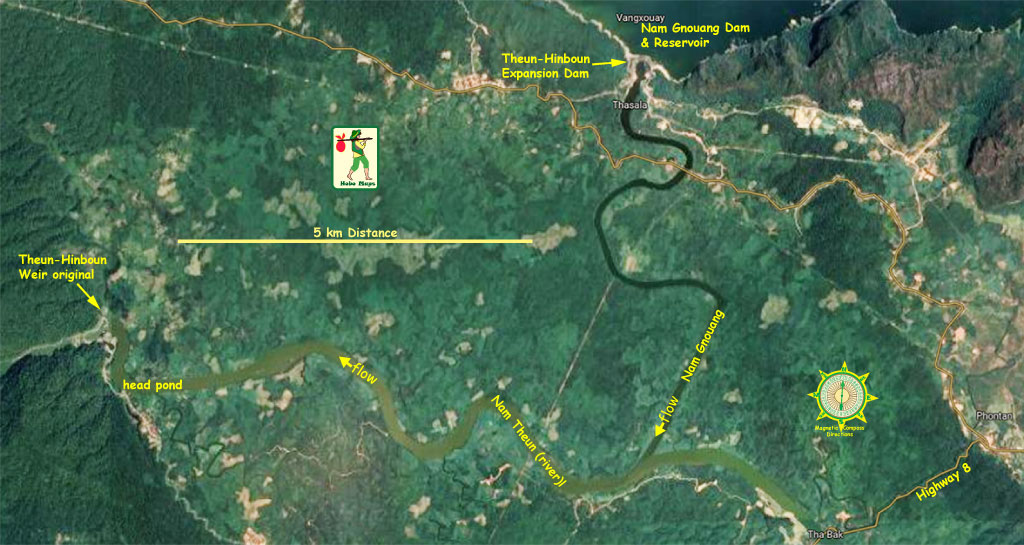
Theun-Hinboun weir and head pond images below at coordinates 18°15'39.6"N 104°33'43.2"E (18.261, 104.562):
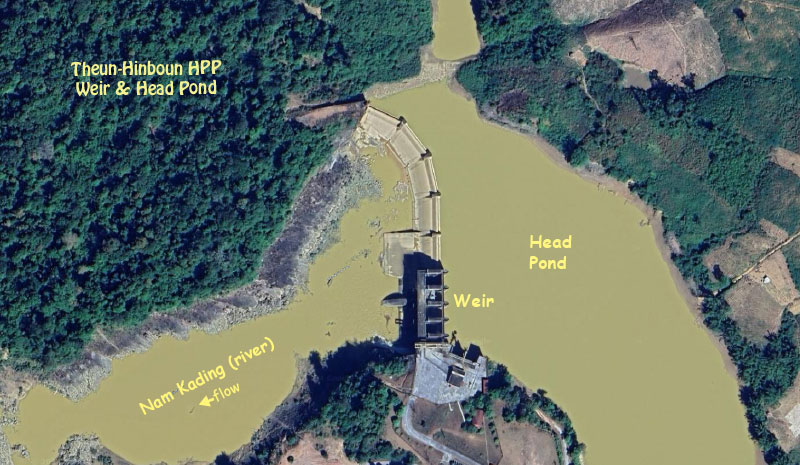

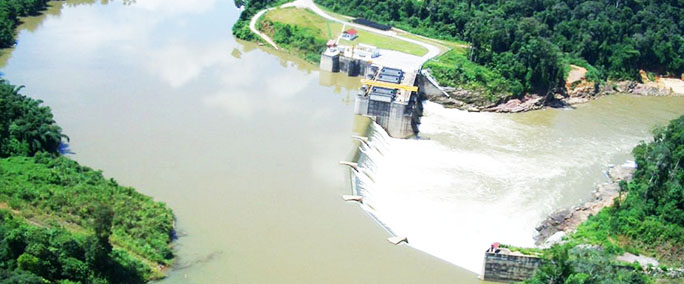
Images for Theun-Hinboun Expansion dam on Nam Gnouang below at coordinates 18°17'45.6"N 104°38'09.6"E (18.296, 104.636):
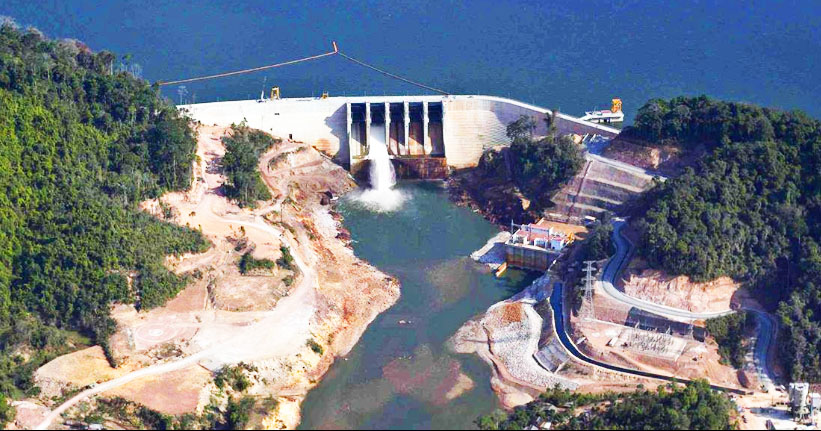
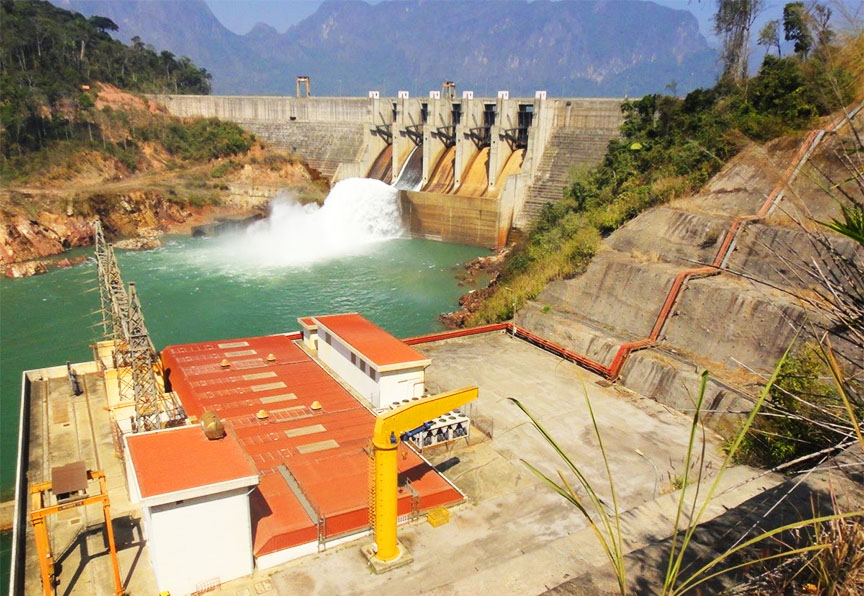

A weir style dam holds back water in a head pond on the Nam Theun (river). Two underground tunnels carry water from the head pond down 240 meters in elevation to a power station located in Na Hin town far below in the Khounkham valley.
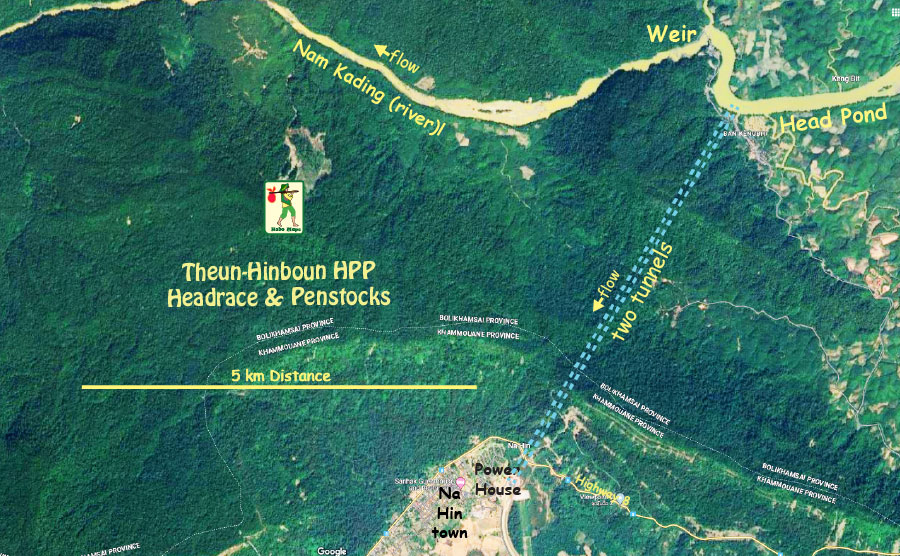
Satellite image below shows Na Hin town and powerhouse:
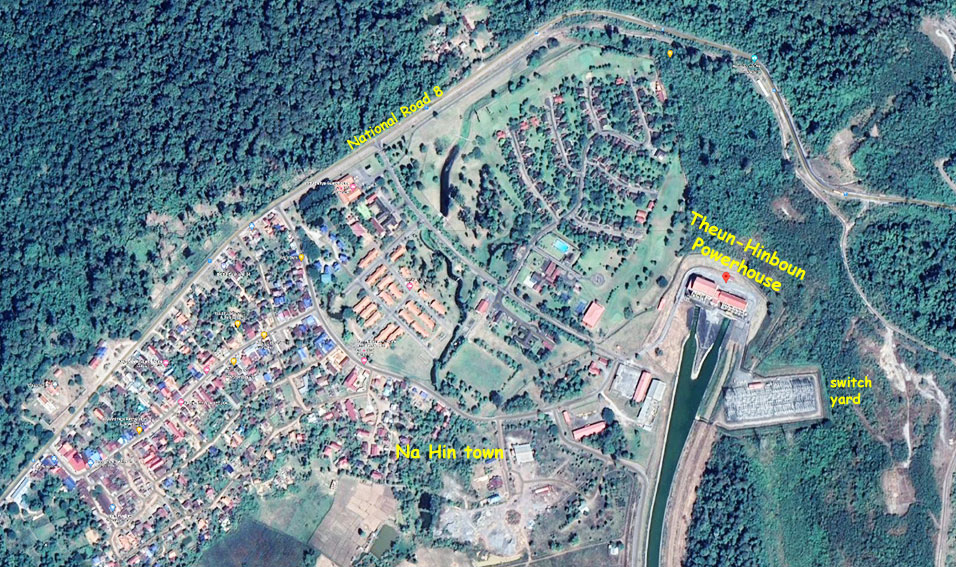
The project operates under a 30-year build-operate-transfer (BOT) concession agreement with option for a 10 year extension (for initial project).
The Theun Hinboun hydropower project is considered a commercial success and produced good dividends and royalties over the first decade.
Theun-Hinboun Powerhouse images below at coordinates - 18°12'36.6"N 104°32'19.6"E (18.210176, 104.538788):
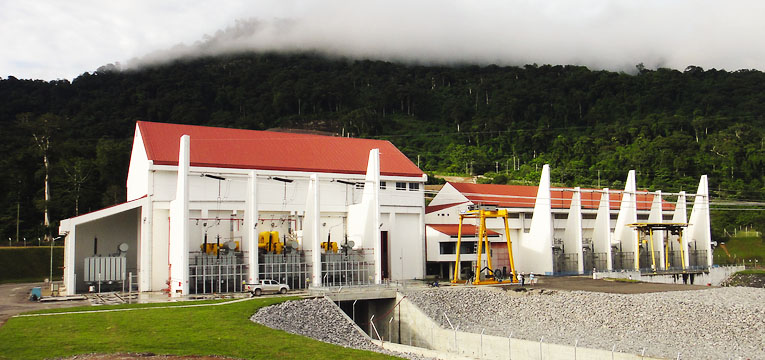
Expansion Project 2012: After a decade of operation it was decided to expand the project by constructing a dam on the Nam Gnouang (river) which is a tributary river to the Nam Theun river. The reservoir now enables regulation of flows into the rather small Theun-Hinboun headpond.
The new dam is about 20 kilometers upstream from the existing Weir Dam & head pond. A new powerhouse with two 30 MW vertical axis Francis turbines was constructed near the dam. This now gives the overall project 3 powerhouses.At Na Hin plant facility, the new 220 MW vertical axis Francis turbine operates alongside the existing two 110 MW turbines. Total combined generating capacity is now 500 MW (110 + 110 + 220 + 60). Annual generation potential is roughly estimated to be about 2,000 GWh.
The Nam Gnouang Dam structure is 480 meters wide and 65 meters high with five gates that are opened only to discharge water to avoid flood events. The net head for the 60 MW power plant is only 47 meters.
The expansion works included a steel penstock 1,000 meters long with diameter ranging between 5.8 and 5.3 meters, a headrace tunnel with length of 300 meters and diameter of 11 meters and a 5,500 meters-long concrete-lined headrace tunnel with internal diameter of 6.5 (or 6.9) meters, located parallel to the existing tunnel and bored by Tunnel Boring Machine (TBM) method.
Theun-Hinboun Hydropower Project layout in image below after the expansion project:
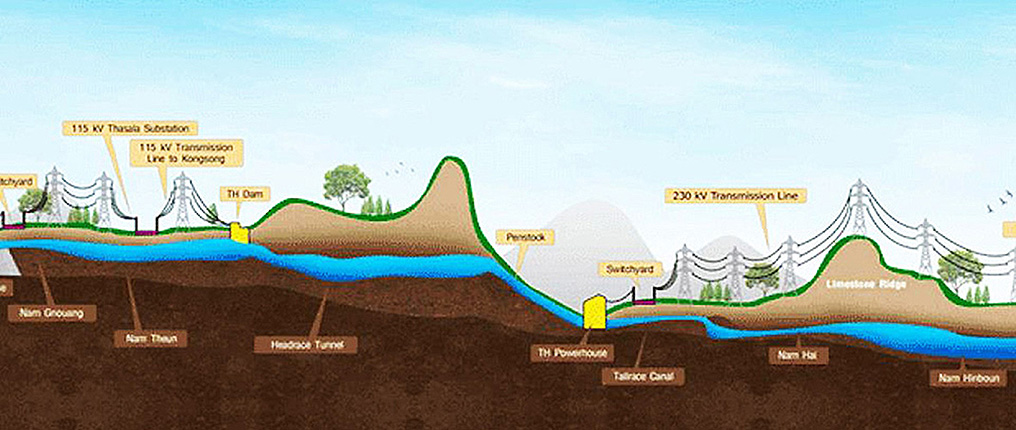
Much of the water from the Nam Gnouang reservoir is used to generate power twice - water flows first through a 60 MW turbine at the expansion dam site and then to the weir headpond and down through the new 900 meter penstock to the new powerhouse in Na Hin town.
The output sold to Thailand is transmitted through two 230 kV transmission lines running beside each other.
440 MW of the combined output is be sold to EGAT and the remaining 60 MW to Electricite du Lao (EDL).
The Expansion Project reservoir inundation required the resettlement of 4367 persons from 12 settlements in the reservoir area.
Images for Nam Gnouang reservoir and intake structure below:


From the Nam Gnouang Powerhouse the water flows a short distance down the Nam Gnouang (river) and into the Nam Theun (river) and then to the existing head pond at the Theun-Hinboun Weir/Dam. Somewhere near the Weir/Dam it seems the Nam Theun river name ends and the Nam Kading name begins - very strange since it is the same natural river that joins the Mekong at Pak Kading town.
The water released from the Na Hin powerhouse flows to a spillway and into a regulating reservoir before final release into the Nam Hai (river), a tributary of Nam Hinboun which flows into the Mekong. The project is a trans-basin diversion project that diverts water from the Nam Theun basin into the Nam Hinboun basin.
Theun-Hinboun Layout below:

Images below show upgrade of facilities project adding an additional 20 MW capacity:

Powerhouse interior image below:

Theun-Hinboun Control Room 1 image below:
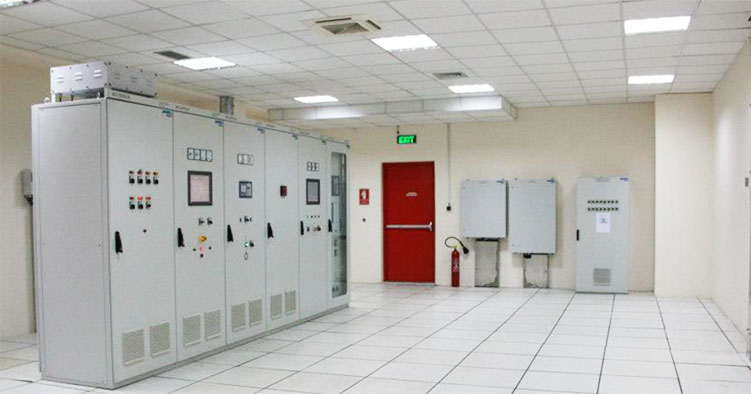
Three different styles of generators and a rotor at Theun-Hinboun shown below:
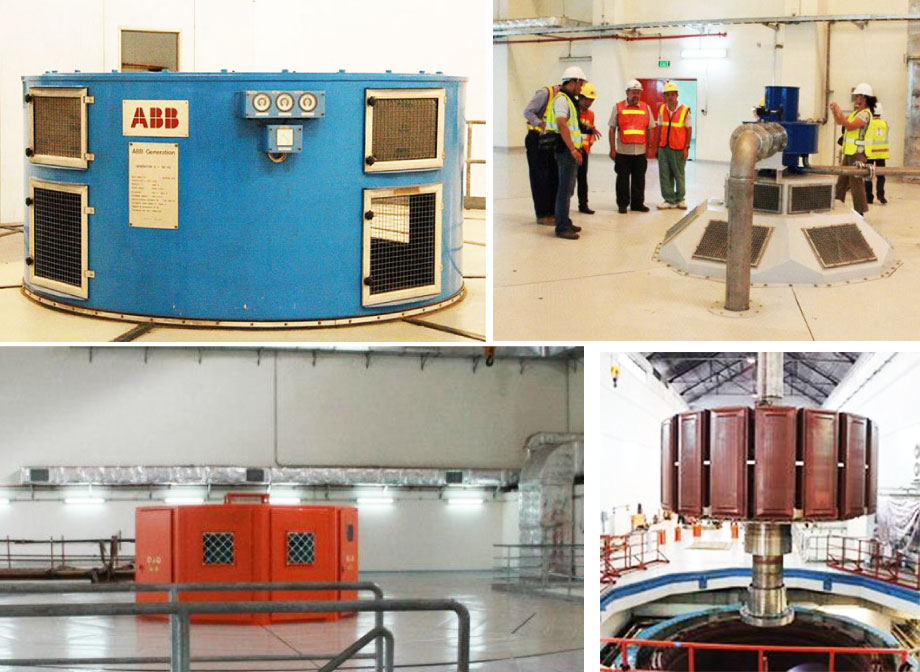
Theun-Hinboun Switchyard 1 image below:
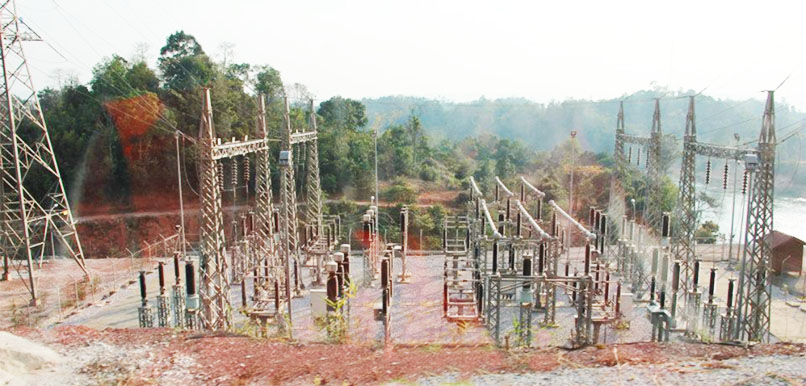
Theun-Hinboun Switchyard 2 image below:
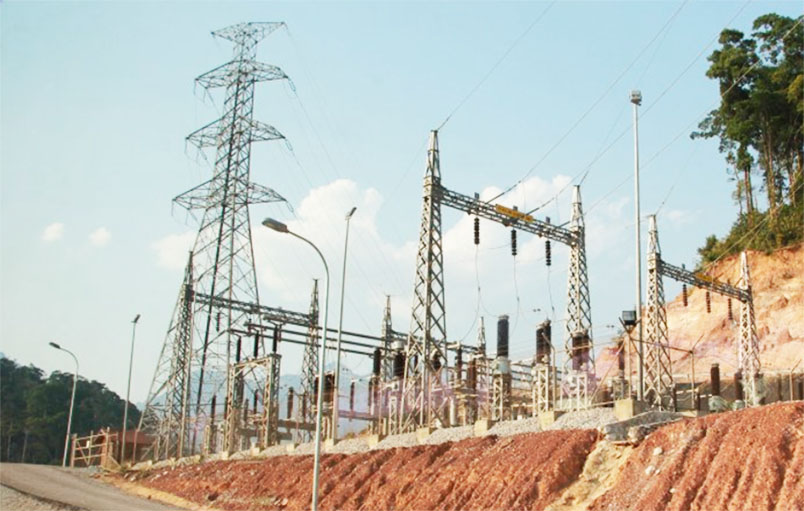
Location map below shows Theun-Hinboun Projects at the top in gray and pink ovals:

See our map of Nam Theun Basin and Nam Hinboun Basin water drainage and catchment areas HERE
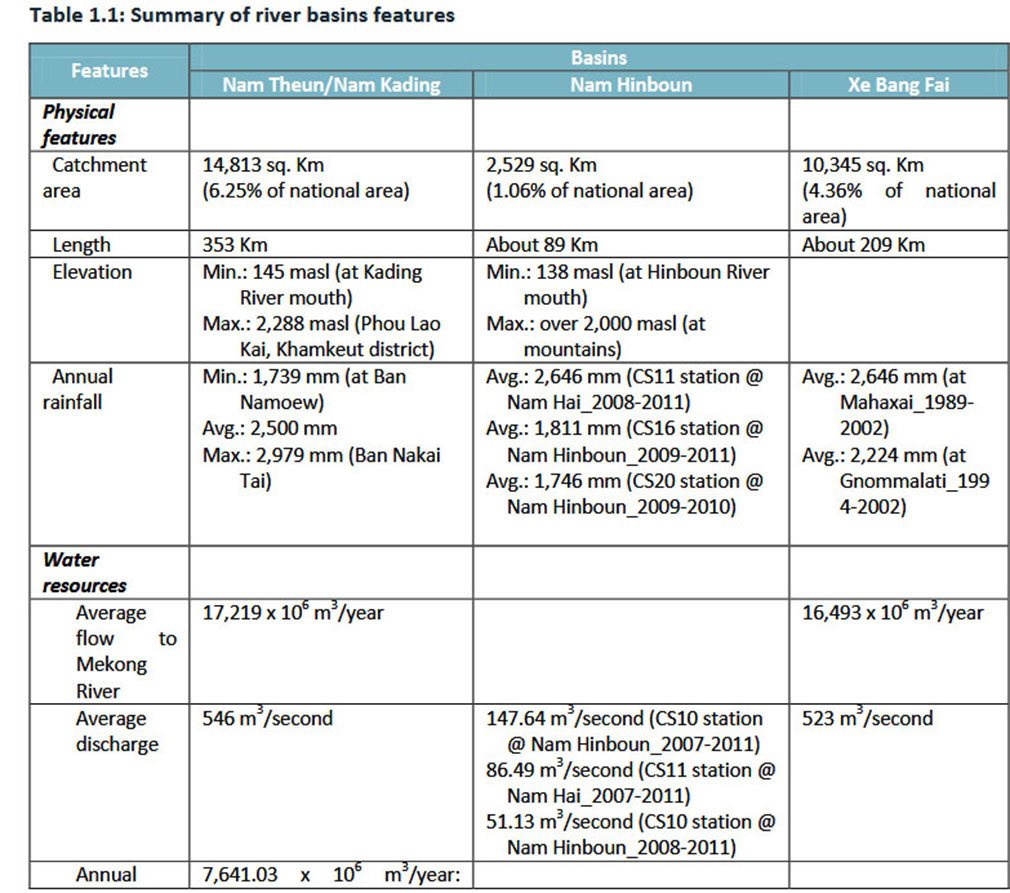
Cooperative Muratori & Cementisti C.M.C di Ravenna & Right Tunneling were contractors involved in the expansion project. Tunnel-boring machine breakthrough image below after nine months of boring 6.9 meter diameter tunnel 5,500 meters from intake pond to powerhouse.
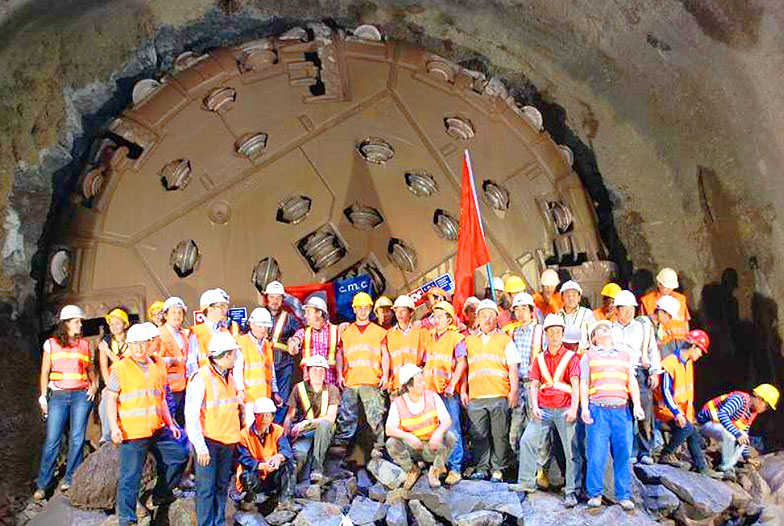
Theun-Hinboun tunnel diagram below:

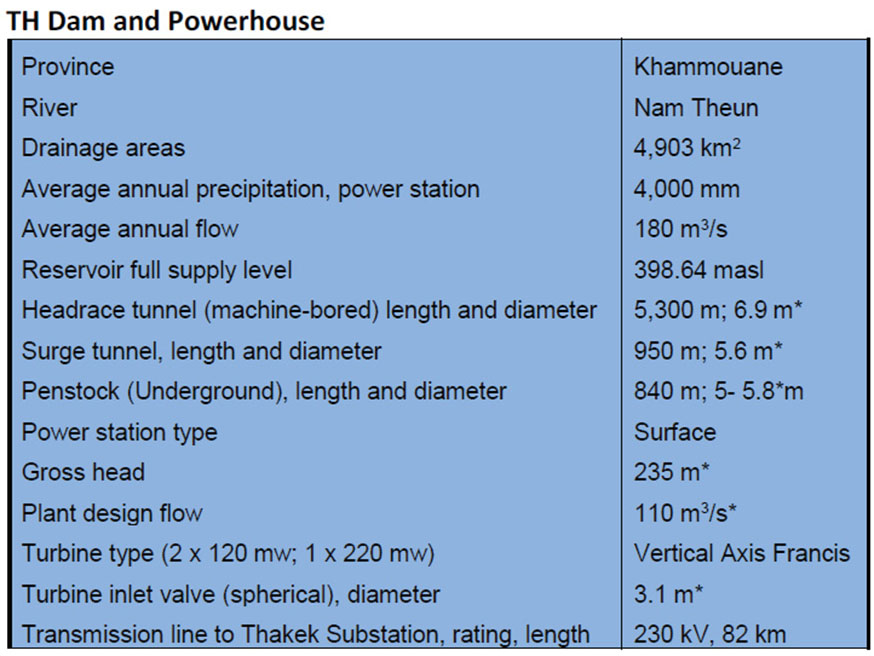
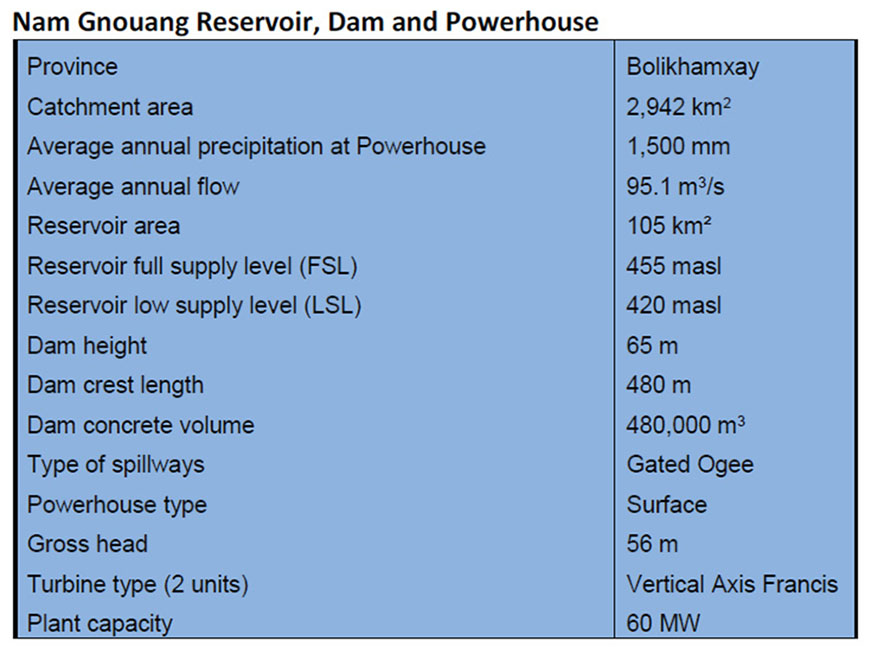
Nam Gnouang reservoir total storage capacity is about 2,900 million cubic meters while effective active capacity in chart below is 2,262 million cubic meters.
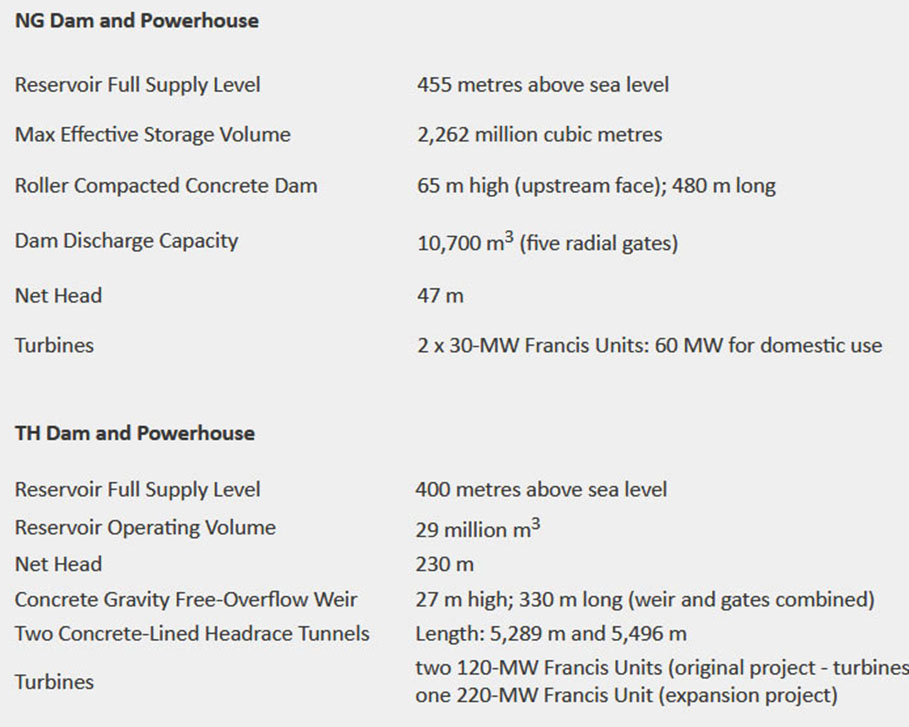
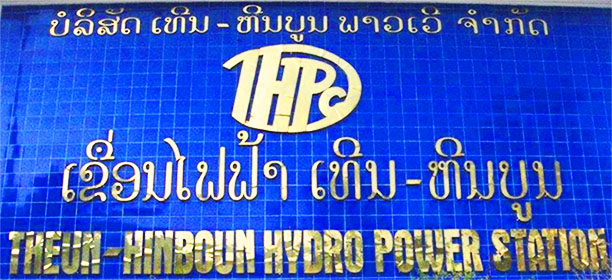
440 MW of Theun-Hinboun's output is for export to Thailand by an 86 km long 230 kV transmission line to the border at Thakhek by the route shown in map below: See enlarged version HERE.
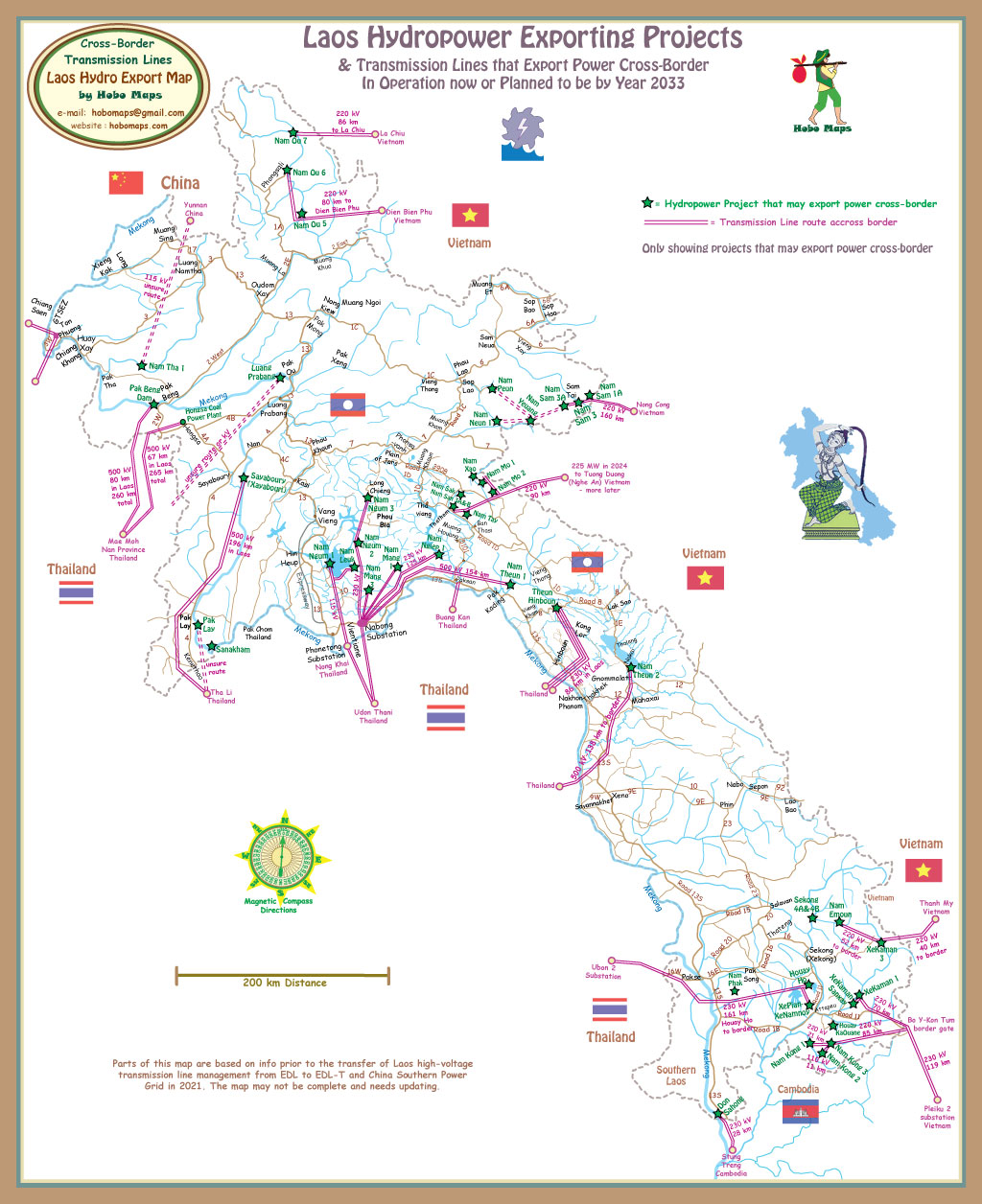
Theun Hinboun Nam Gnouang reservoir image below as of Oct. 2022 at end of rainy season:

Theun-Hinboun powerhouse image (before expansion) is on the Lao 20,000 kip banknote.
